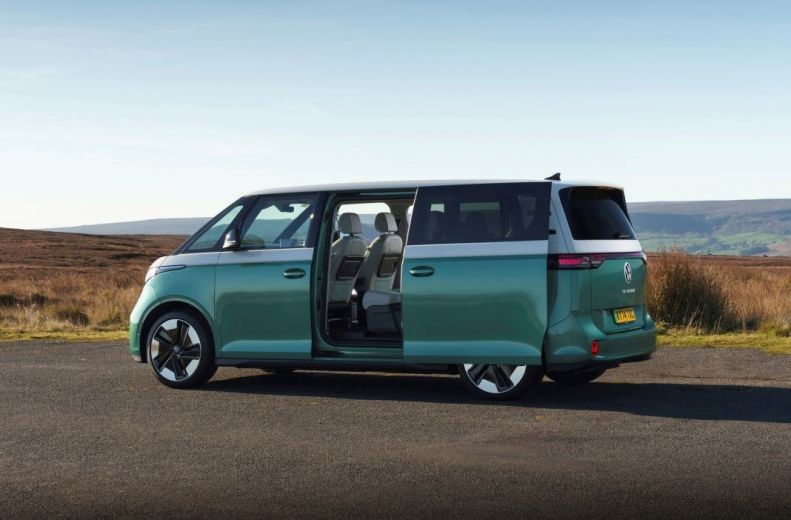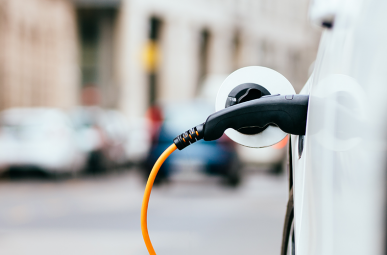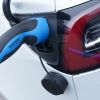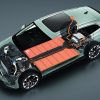Electric cars with seven seats were once a real rarity as there were a few obstacles to their widespread adoption. Firstly, fitting seven seats in even a petrol or diesel car requires very clever packaging, and squeezing a big EV battery under the car’s floor made this even more difficult.
Also, because seven-seaters tend to be heavier than five seaters, they’ll need big batteries to give them a practical amount of range on a charge. Not only does that make them even heavier, but it also increases the cost of production. But advances in battery and charging technology has meant a big increase in environmentally friendly seven-seat options on the market.
There’s now a great variety of electric seven-seaters to suit budgets big and small. From affordable electric vans, to practical electric MPVs and desirable SUVs, families with lots of kids needn’t stick with petrol or diesel anymore.
Our list of the best seven-seater EVs is made up of the most popular models according to RAC Drive readers – with cars priced from £30,000 to well over £100,000.
Best electric seven-seaters on sale 2025: the shortlist
- Kia EV9
- Volkswagen ID. Buzz
- Peugeot E-5008
- Mercedes-Benz EQB
- Citroen e-Berlingo
- Volvo EX90
- Mercedes-Benz EQS SUV
- Vauxhall Vivaro Life Electric
Best electric seven-seaters to buy in 2025:
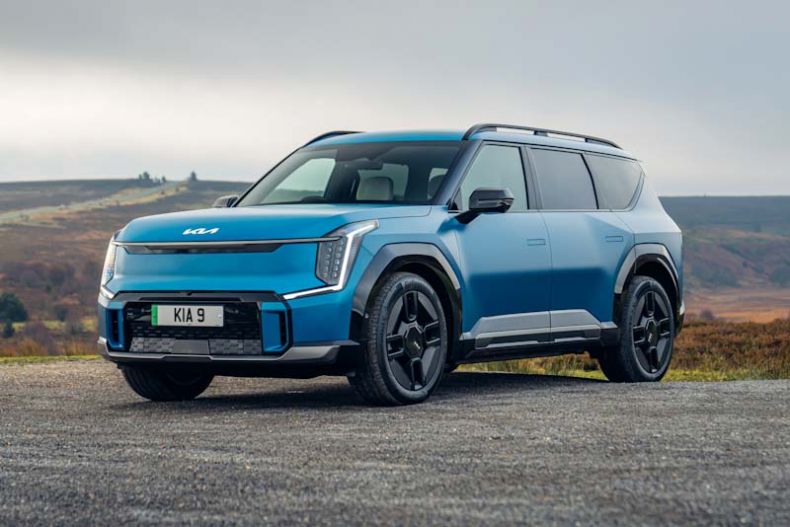
Kia EV9
The EV9 is the pinnacle of Kia’s electric car range, offering the highest level of technology, comfort and (most importantly for this list) practicality. You can think of it as an electric Sorento of sorts, just with added design focus and desirability.
The EV9 is no occasional seven-seater, with room for adults on all three rows, plenty of storage and comfortable seats, plus impressive levels of standard kit. Factor in strong performance and an impressive range of up to 349 miles on a charge and it’s not hard to see why the EV9 is such a hit.
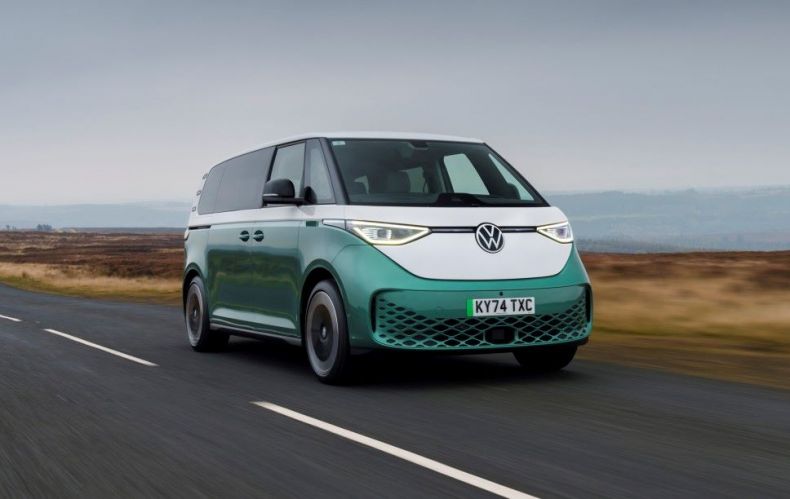
Volkswagen ID. Buzz
Though the EV9 (above) and the ID. Buzz are close competitors, they’re as different as chalk and cheese. While the Kia is a futuristic SUV, the Volkswagen is effectively an MPV but with a funky retro exterior harking back to the German brand’s iconic Type 2 van/minibus.
Don’t think the ID. Buzz is all style and no substance, though. In long wheelbase, seven-seat form it’s even roomier than the EV9, with excellent passenger space, flexible seats and an enormous boot. Factor in a comfortable ride, great visibility and solid build quality and it’s a strong buy – but optional extras will easily push up the price.
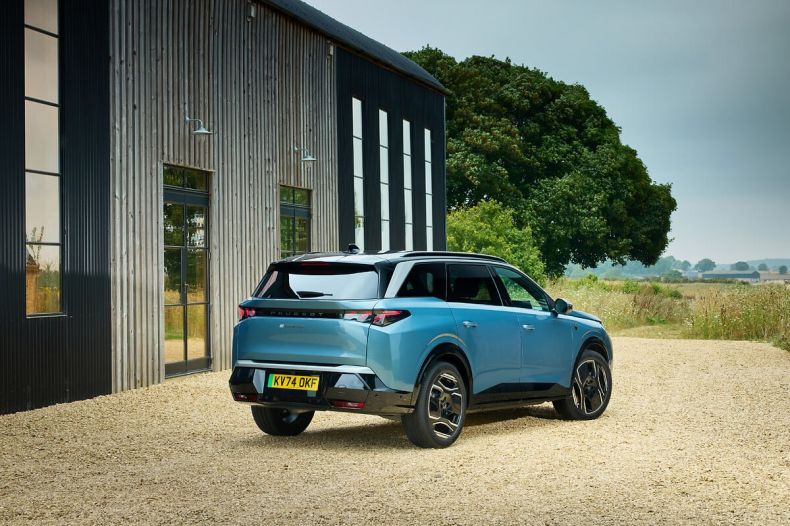
Peugeot E-5008
Although the E-5008’s starting price is less than half that of the most expensive seven-seaters in this list, the humble Peugeot can be specified with the longest electric range of any car here: up to 410 miles on a single charge.
That makes it perfect for families that like to road trip, and the stylish and roomy E-5008 isn’t just a numbers car. The bigger brother to the e-3008 is a good halfway house between the immense space of large models like the EV9 and the compact size of the EQB, offering great seven-seat usability combined with plenty of standard kit.
RAC Online Car Insurance
Save on your car insurance with our online self-serve policy. Rated ‘Excellent’ on Trustpilot.


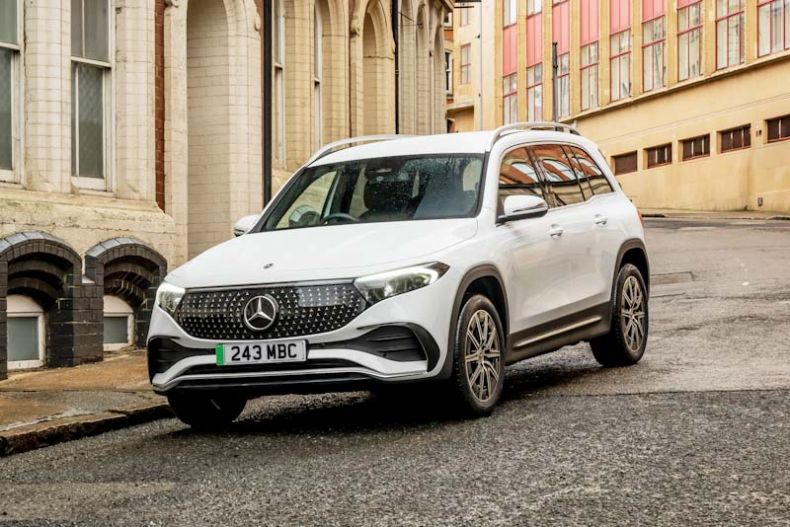
Mercedes-Benz EQB
Not everyone wants to use seven seats all the time – and why be burdened with a large and heavy car just for the occasional need for a third row of seats? That’s where the Mercedes-Benz EQB comes in. At under 4.7m long it’s the smallest car here yet still offers the flexibility of two chairs that fold out of the boot floor.
Sure, those rearmost seats are tight and only suitable for smaller children, but that makes the EQB ideal for giving your children’s mates a lift home from football practice. You also get a range of up to 321 miles, a tech-laden cabin, good refinement and a prestige badge.
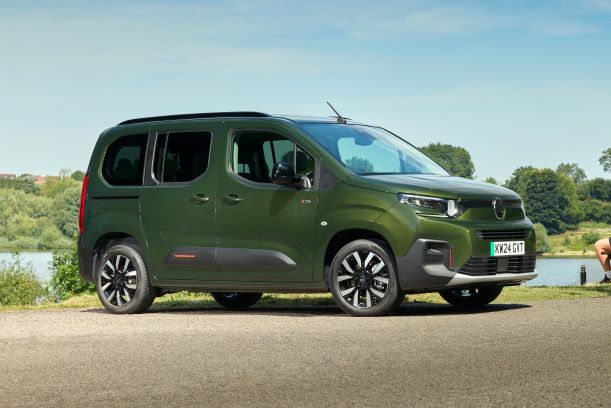
Citroen e-Berlingo
Many of the electric seven-seaters on this list are loaded with gizmos and come with premium price tags. But what if you just want a simple and affordable people carrier? You’ll want the Citroen e-Berlingo, which takes seven in XL form.
With a range of up to 208 miles and just 136hp the Berlingo is better for local trips than long-distance drives, but essentially being a van with windows means oodles of space, some clever interior storage solutions and a surprisingly comfortable ride. And you won’t care about desirability when you see that it’s half the price of a Kia EV9. Also consider the very similar Vauxhall Combo Life Electric and Peugeot e-Rifter.
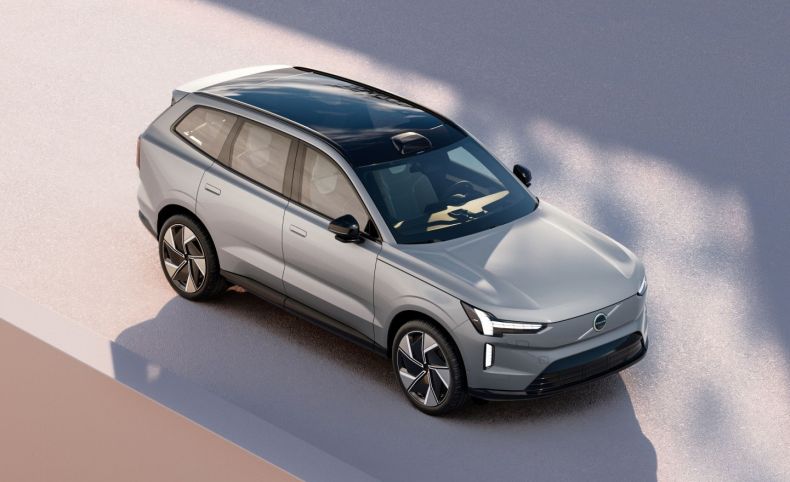
Volvo EX90
Volvo claims it’s designed the EX90 to be the safest car it’s ever produced – and given the Swedish company’s excellent reputation for protecting occupants that makes it one of the safest cars on the road today. What better peace-of-mind for your loved ones?
Alright, even the cheapest EX90 is nearly £100,000, so it turns out you can put a price on safety. But the Volvo has plenty of other strings to its bow, including impressive luxury, rapid performance and a range of up to 374 miles.

Mercedes-Benz EQS SUV
Are you a well-heeled parent who wants one electric car to do it all? If your budget is large enough, the Mercedes-Benz EQS SUV has to be considered. There is no more opulent way of transporting seven occupants in smooth and silent electric power.
Alright, with prices close to £130,000 before you even consider options, the EQS SUV is out of range of all but the wealthiest families. But you do get a seriously luxurious cabin with amazing technology, unbeatable comfort, great performance and lots of space. It’s basically an electric S-Class MPV.
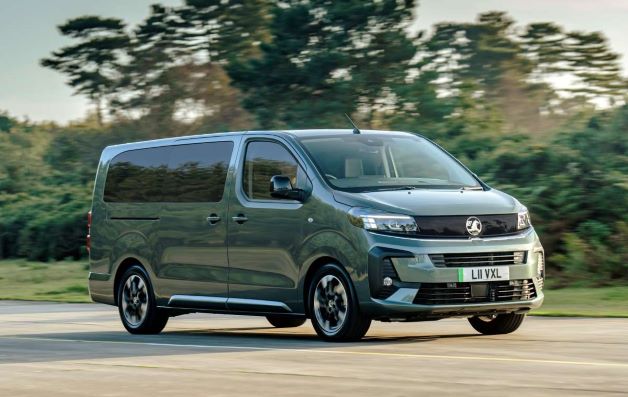
Vauxhall Vivaro Life Electric
Sometimes size is all that matters, and if you’re a larger-than-average family then getting everyone (along with pushchairs and all the other parenting detritus) into one car isn’t easy. If that’s the case, then the Vauxhall Vivaro Life Electric is probably for you.
It’s a large van-based MPV that offers seating for up to nine – and if you don’t need all of those, you can slide the seats around or even remove them entirely. There are options including swivelling mid-row seats and a big fold-out table, making this the perfect family wagon. Just bear in mind that it isn’t exactly luxurious and easy to park, while an EV range of just 143 miles isn’t the most practical.
The Vivaro Life Electric has siblings in the form of the Peugeot e-Traveller and Citroen e-Spacetourer - we'd go with whichever is the best value at the time.
Coming soon: electric seven seaters arriving in 2025 and beyond
Hyundai IONIQ 9
.jpg)
Like the Kia EV9 but the design doesn’t float your boat? You might want to check out Hyundai’s equivalent: the new IONIQ 9. It’s not on sale in Europe until later in 2025, but we already know plenty about it.
Along with a bold design it comes with a vast 110kWh battery promising up to 372 miles of range, plus a Performance AWD option offering a 0-62mph time of just 5.3 seconds. It’ll charge almost as quickly as it accelerates, too, while there’s impressive new technology and sustainable materials used in its construction.
Tesla Model Y
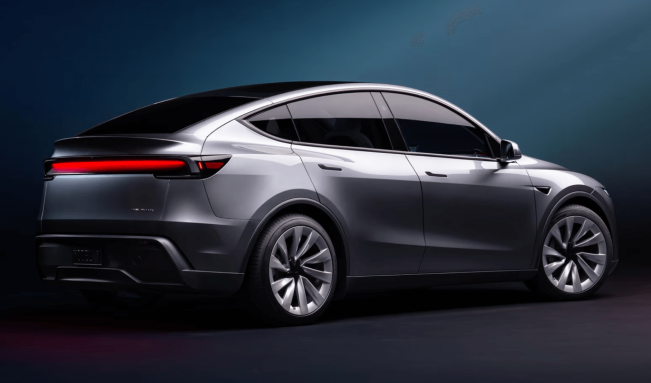
The Model Y is a sales sensation for Tesla, but it’s been around since 2020 and has been due an overhaul. Enter the new, heavily updated Model Y, on sale soon with new looks, more tech, more power and increased range.
Most importantly, early indications are that a seven-seat version may finally make an appearance over in Europe, and hopefully the UK. Nothing is yet confirmed, but it’s worth keeping an eye on.
Ford E-Tourneo Custom

The latest Ford Transit Custom has an all-electric cousin called the E-Transit Custom. Already proving popular in the commercial vehicle market, the next model to arrive is the passenger carrying version, called the Tourneo, and the electric e-Tourneo Custom.
It’s not available to order at the time of writing but will be very soon. Expect it to offer up to nine seats, a range of around 200 miles from a 64kWh battery and 125kW fast charging. A seriously practical family car.
BYD Tang
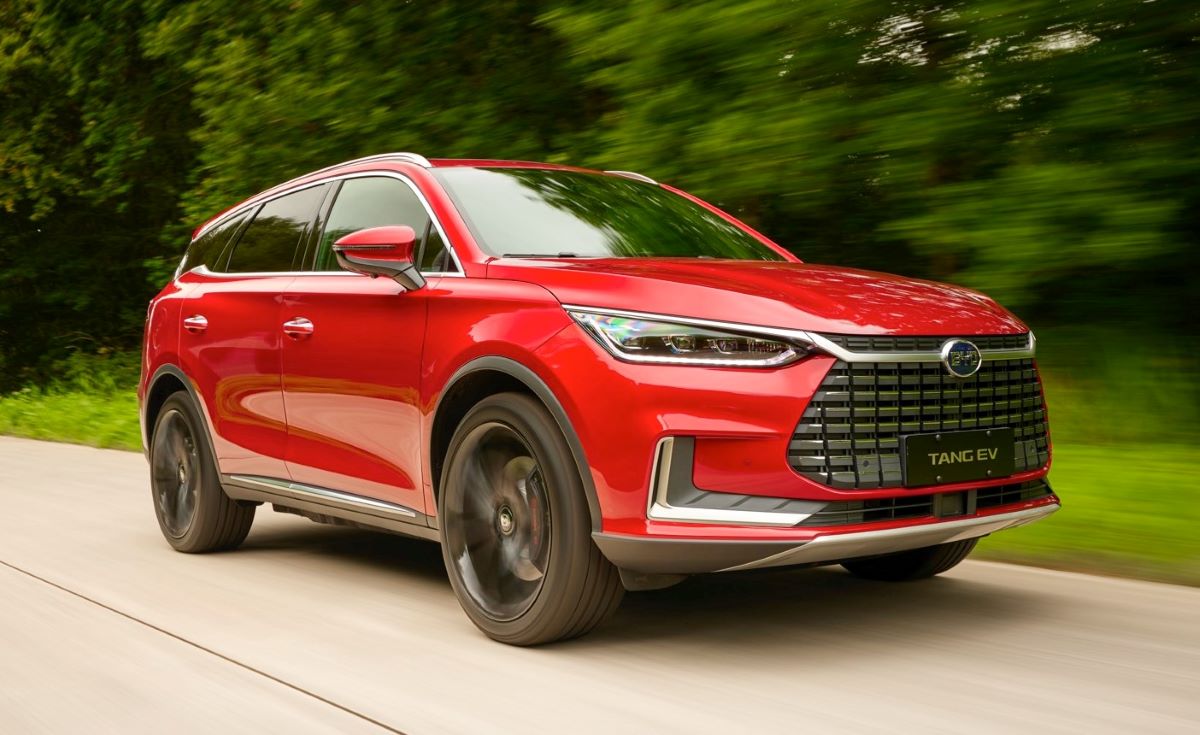
You’ve probably heard of BYD by now – it’s one of the biggest Chinese car companies there is and has outsold Tesla globally on more than one occasion. The Tang is an electric seven-seat SUV that’s been very popular within China but hasn’t made it to European shores yet.
It could make its way over to European shores in time, though with a range of around 250 miles in a charge, 510hp and a cobalt-free battery pack.

RAC sale – up to 33% off*
• Roadside cover from £5.29 a month†
• We get to most breakdowns in 60 mins or less
• Our patrols fix 4/5 breakdowns on the spot


